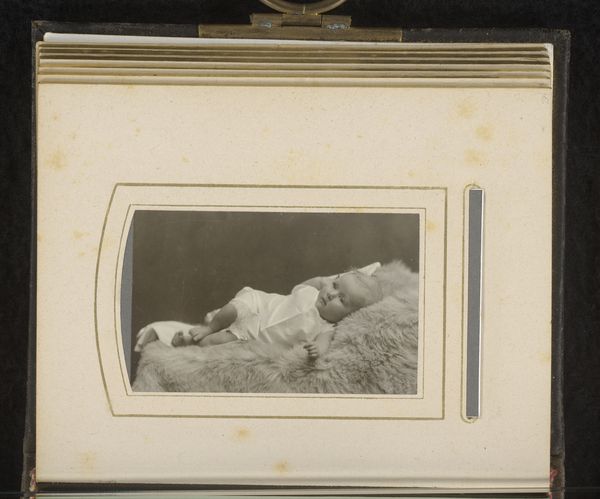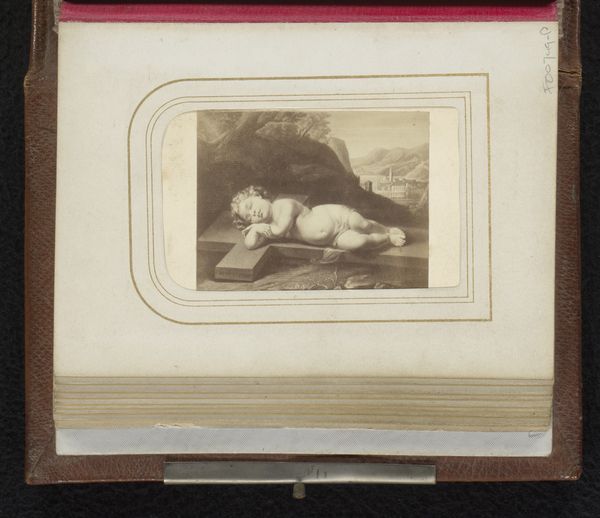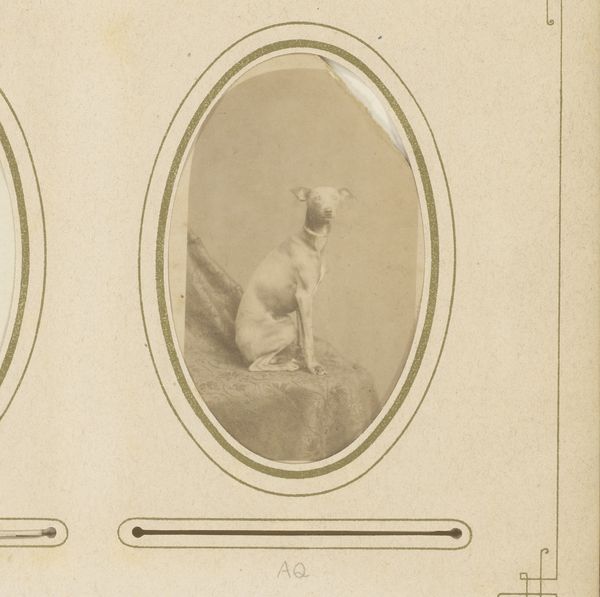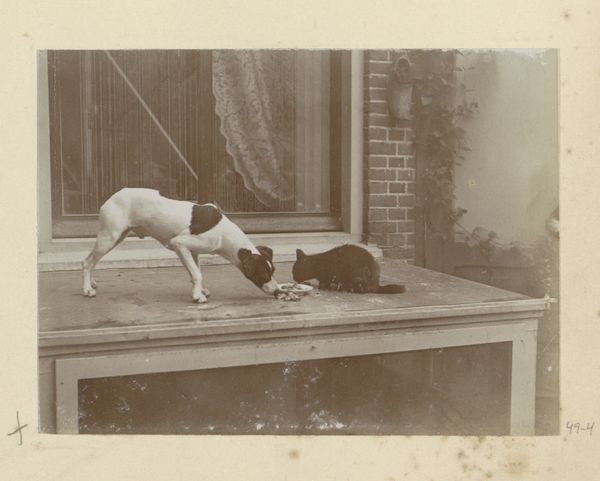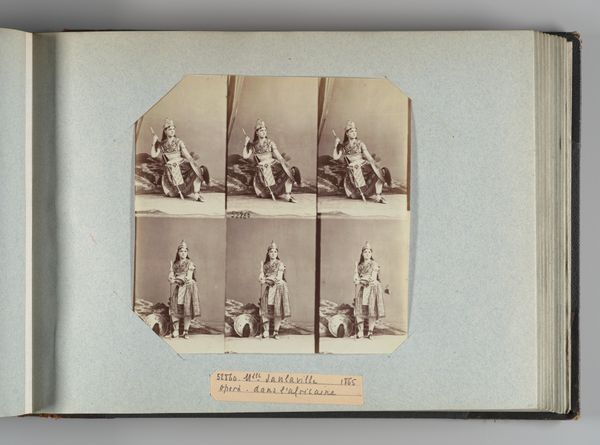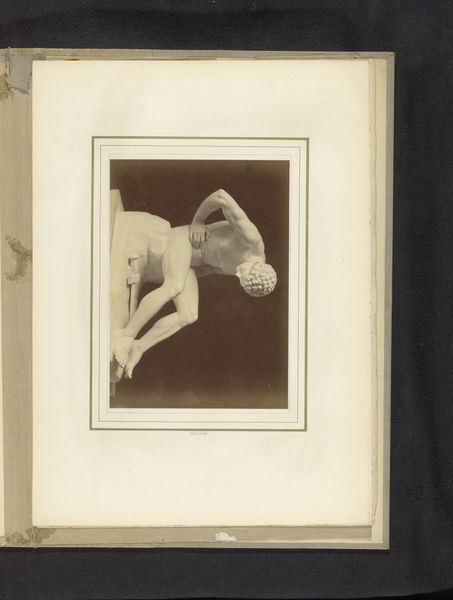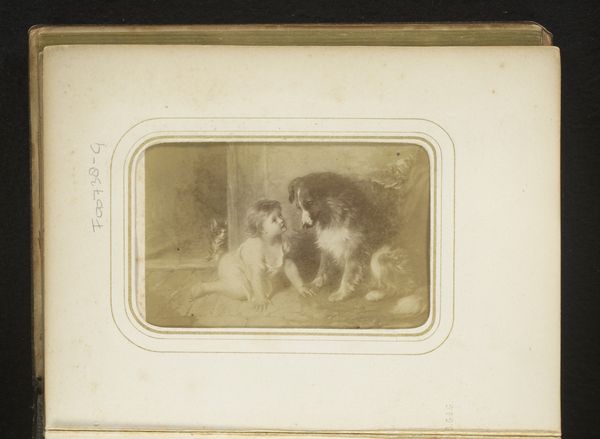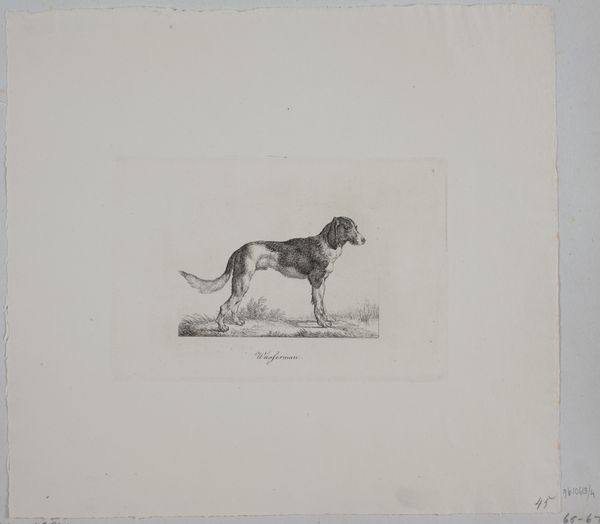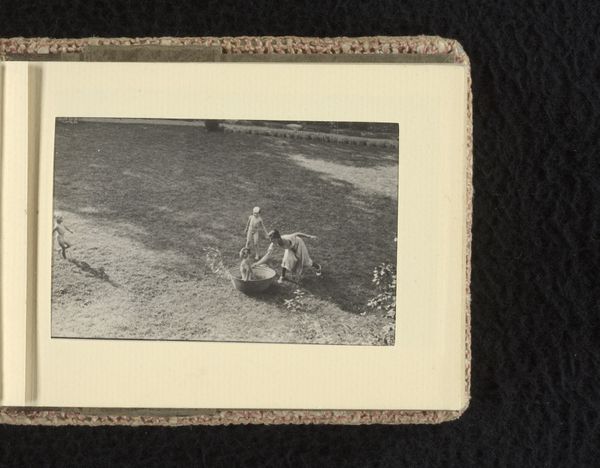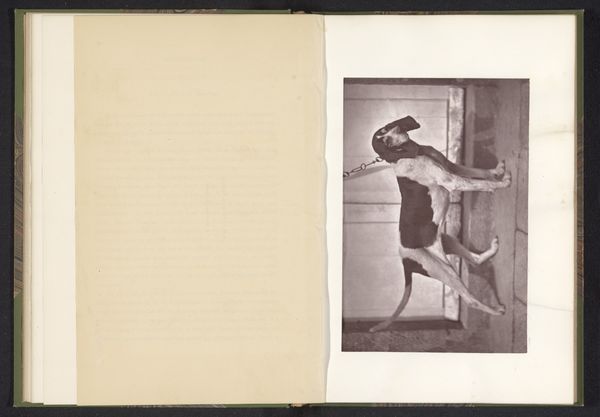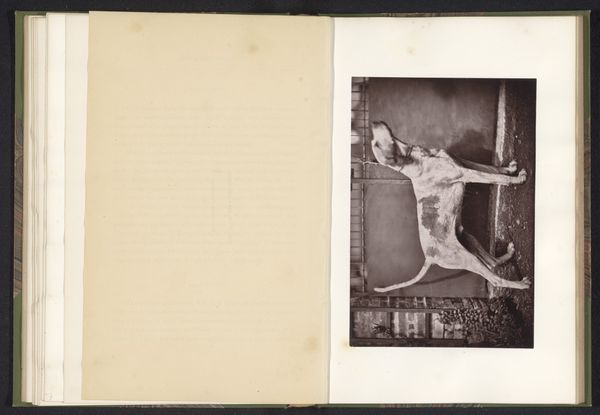
Fotoreproductie van een schilderij van een Engelse pointer door Hieronymus Sperling 1865 - 1900
0:00
0:00
drawing, paper
#
portrait
#
drawing
#
dog
#
landscape
#
paper
#
watercolor
#
realism
Dimensions: height 86 mm, width 53 mm
Copyright: Rijks Museum: Open Domain
This is a photo reproduction of a painting of an English pointer, likely made in the 19th century using photographic techniques that were still relatively new. The image itself is modest in scale, made with the intention to record and disseminate an image efficiently. Consider the amount of labor that went into both the original painting and the subsequent photographic reproduction. The original artist likely spent hours, maybe days, capturing the likeness of the dog, and then an anonymous photographer carefully made a copy. Photography in this era was as much craft as it was science. The photographer carefully controlled light, exposure, and chemical processes to produce a clear and lasting image. It’s a far cry from the instant snapshots we take today. Looking at this image, it's fascinating to think about the layers of skill and labor involved in its creation. It reminds us that even seemingly simple images have a rich material history, tied to both artistic skill and the rise of industrial image-making. By recognizing the value in both, we can move beyond traditional hierarchies of art and craft.
Comments
No comments
Be the first to comment and join the conversation on the ultimate creative platform.

